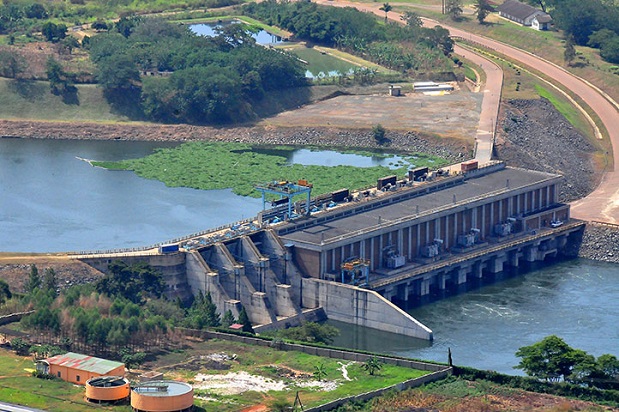Uganda’s current state of the economy is worrying and requires urgent practical interventions if it is to transform.
The figures used in this article are derived from a presentation delivered byRamathan Ggoobi, an analyst and lecturer at Makerere University Business School (MUBS) at the National Leadership Institute, Kyankwanzi on July 7, 2019.
His presentation was on how Uganda can achieve Vision 2040 that aims to deliver the country into an upper Middle Income Status.
The figures he used were mainly got from the Bank of Uganda (BoU), Uganda Bureau of Statistics (UBOS) and the Uganda National Household Survey (UNHS- 2016/17).
According to Ggoobi’s presentation, Uganda’s population is estimated at 40m, with the rural population estimated at 82%.
Population below 30 years is 78%.
The country’s fertility rate is 5.4 children while life expectancy is 63 years.
Literacy rate is estimated at 74% while access to electricity is at 22%.
Access to safe water is estimated at 78% while houses with bricks are at 67%. Houses with iron sheets are at 75% while cemented houses are estimated at 37%.
According to the Uganda National Household Survey 2016/17), Uganda has 7.3m households (HHs) and of these, 6.9m are in agriculture.
Shockingly, 4.8m HHs are engaged in subsistence farming.
Only 114,032 households are engaged in commercial agriculture.
HHs in other activities are 2m.
HHs that can afford salt form 54% of the total households, while those without toilets are at 7.3%.
Children that under the age of 5 and are malnourished are 53%.
Only 6.2 % of Households have a hand washing facility (water and soap) as per the UNHS, 2016/2017.
Economic Facts
Uganda’s total Gross Domestic Product (GDP) is estimated at Shs109tn ($29.5 bn) while GDP per capita is Shs3m ($825).
Monthly income (per Ugandan) is estimated at Shs250,000, with daily income recorded at Shs8,500.
Poverty is estimated at 21.4% (8m people) and it is highest in Karamoja (61%) and lowest in Kampala (6%).
Less than 2% of the Agriculture Households use irrigation.
Fertilizer use remains very low – 2.2kg per ha (the 2nd lowest in Africa only ahead of DRC).
Further, Uganda has only 9 tractors per 100 sq. km of arable land compared to 30 in Kenya and 24 in Tanzania.
However, growth of the economy is on a recovery trajectory.
GDP growth has recovered to 6.8% in December 2018 from 3% in December 2017.
The recovery has been boosted by growth of agriculture from -0.4% to 6.1% and Services from 4.5% to 8.1%.
Inflation has also come down from 7.3% (May 2017) to 1.7% (May
2018) (food inflation = -0.2%).
What’s the real Problem?
Ggoobi says many people think it is politics/bad leaders, huge public debt, high population growth, regional imbalance and insecurity among others.
He however says all these are symptoms.
He used a quote from Deng Xiaoping, on being confirmed as China’s leader in December 1978; “The basic point is: we must acknowledge that we are backward, that many of our ways of doing things are inappropriate, and that we need to change.”
He noted that the solution to Uganda’s backwardness is agricultural Transformation; diversification & intensification of agriculture – irrigation, new varieties/ enterprises.
He said Local Governments must take lead in this.
Rural Transformation; complementary employment in an emerging rural non-farm economy will also solve Uganda’s current problems, he said.
“We must make agriculture a high value sector, raise productivity in order to reduce subsistence production; speed up the movement of people out of agriculture into more productive sectors,” he said, adding that Uganda must industrialise to create more productive jobs and improve export performance.
To achieve the above, he said the country must promote agriculture based on practical incentives.
“Forget about words such as ‘mobilisation’, ‘sensitization’. Design and implement practical incentives to encourage people to commercialize agriculture or diversify into non-farm activities,” he said.
Why AGRI-LED?
He said commercializing agriculture will create demand for agric produce and reduce post-harvest losses, and hence reduce uncertainty in agriculture.
He added that it will stabilise farm-gate prices and add value to farmers’ produce and thus more money.
“It creates industrial jobs for non-farming households,” he said of the importance of commercializing agriculture.
Risks
Uganda’s economy is expected to grow by 6.3% (driven by good agriculture) this year.
BoU has maintained the Central Bank Rate (CBR), a benchmark lending rate for commercial banks at 10%, a thing Ggoobi says will see banks not reduce on their lending rates.
Regional geopolitics, bad weather, public debt, US President Donald Trump’s trade wars and lower global economic growth are key risks to the growth of Uganda’s economy.
Conclusion
“The greatest economic challenge for Uganda is our failure to transform the economy’s structure. Economies transform when people raise agricultural surplus that they move with into industry and then services.
Our No.1 task is to facilitate smallholder farmers to raise their productivity & incomes,” Ggoobi said.
“In Uganda, the poor do not sleep because they’re hungry, and the rich do not sleep because the poor are awake…the solution is with us!” Ggoobi concluded.





